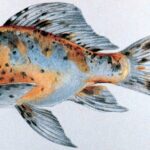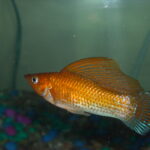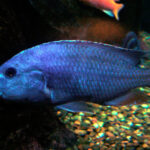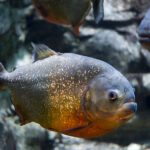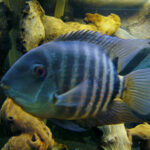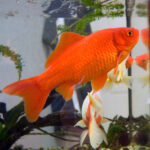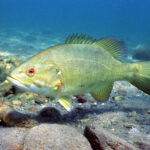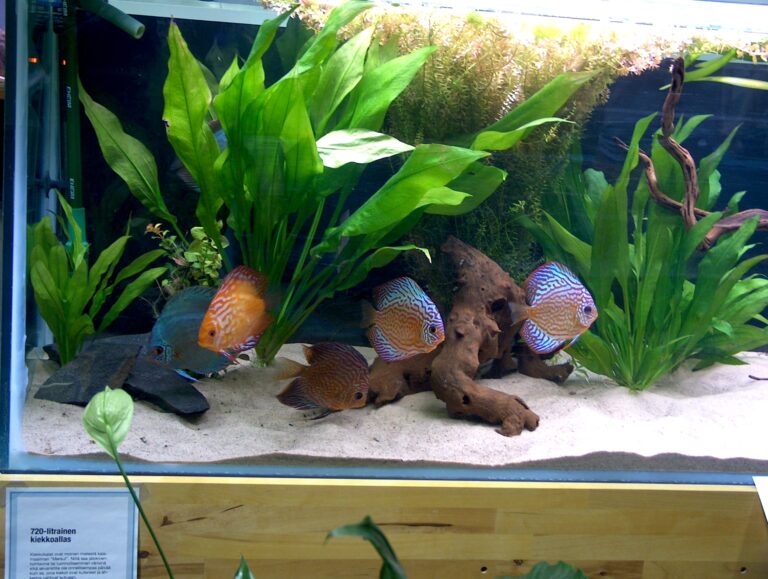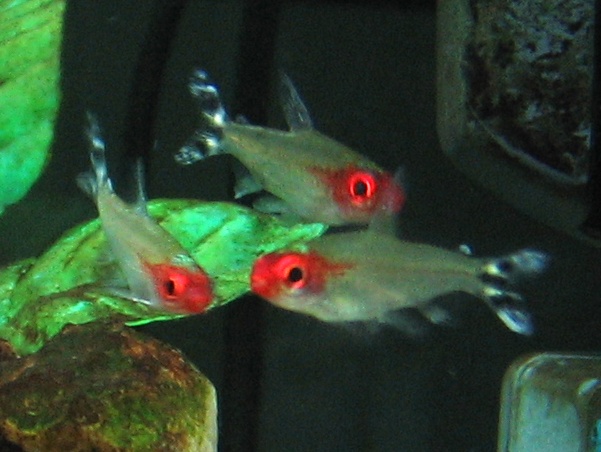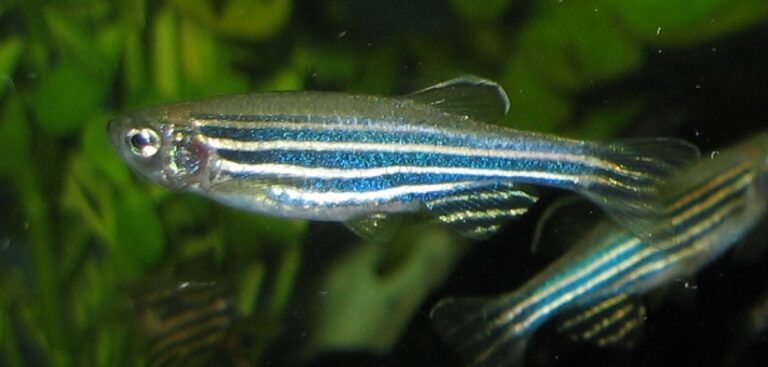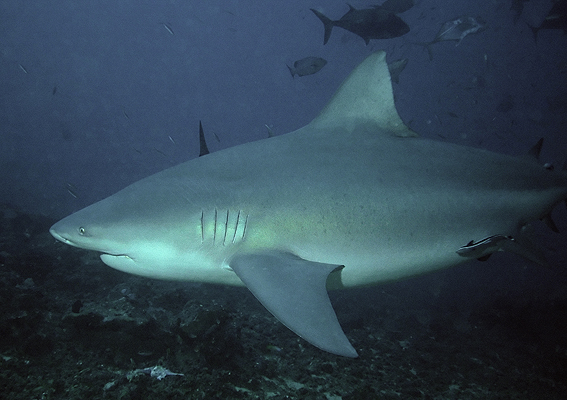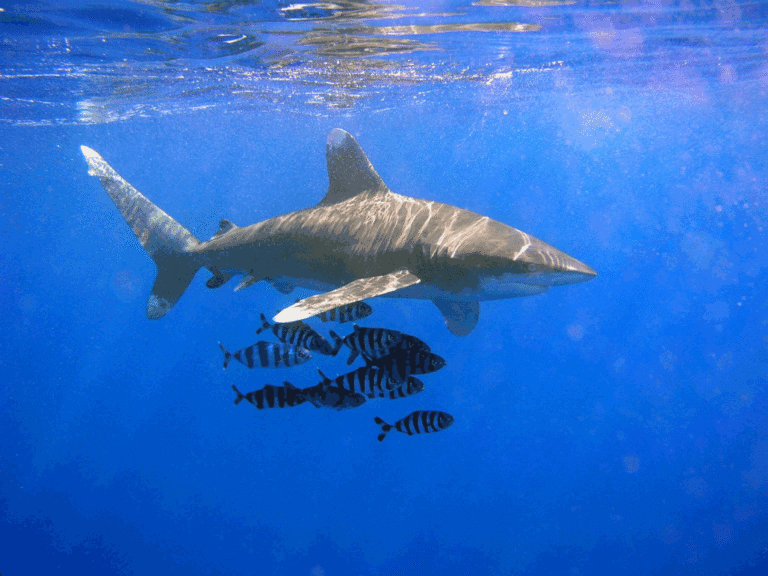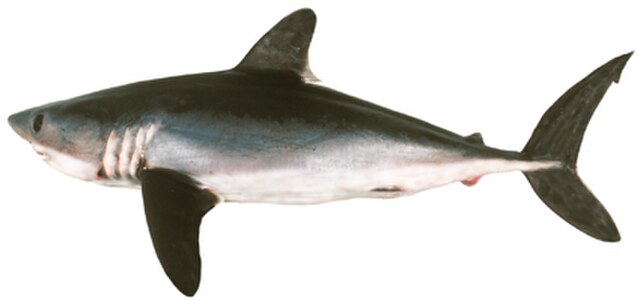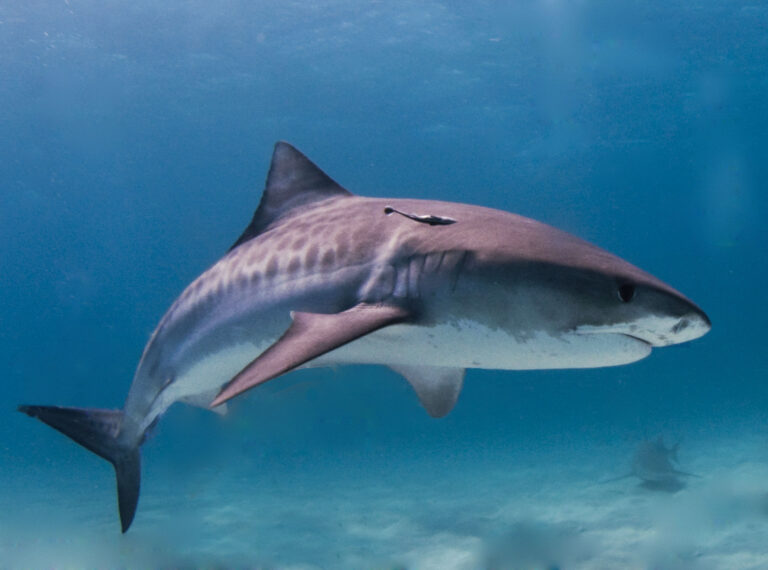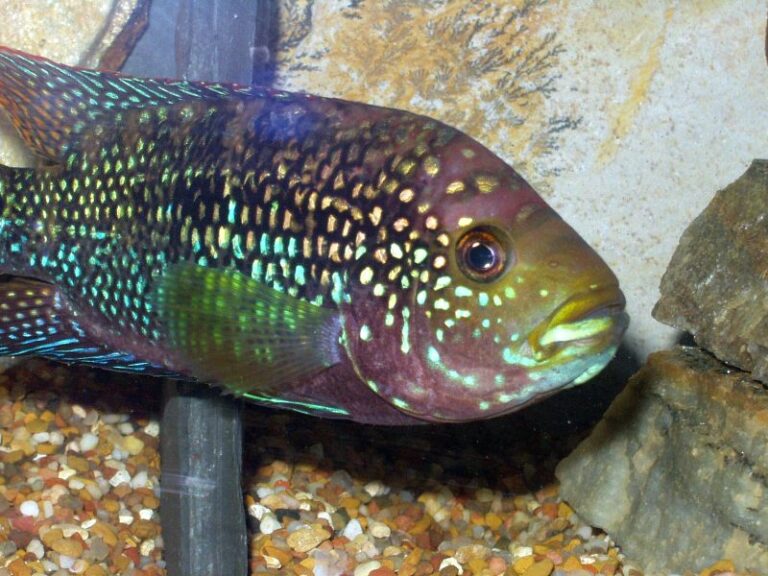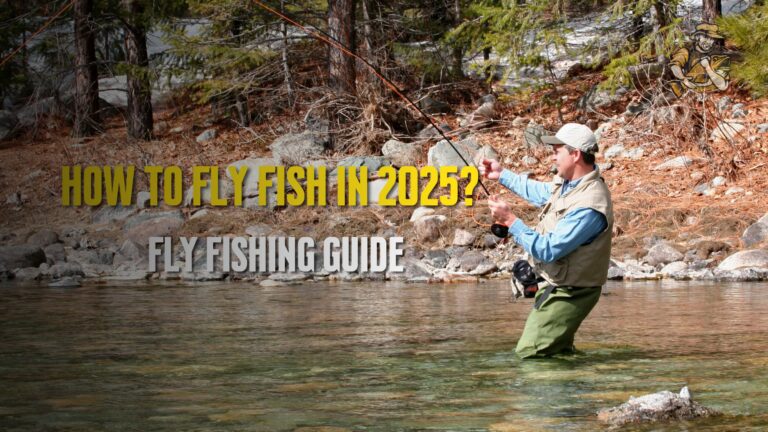Pleco
By Ryan Maron | Last Modified: June 6, 2025

The **Pleco**, scientifically known as *Pterygoplichthys multiradiatus* (common pleco), represents one of the most recognizable and ecologically significant groups within the armored catfish family. These remarkable bottom-dwelling fish serve as essential ecosystem engineers in their native South American river systems, where they function as primary algae consumers and detritus processors. Originally confined to the Amazon and Orinoco river basins, plecos have gained international attention both as popular aquarium specimens and as invasive species in non-native waterways. Their unique combination of algae-scraping abilities, armored protection, and remarkable adaptability has made them crucial players in freshwater ecosystem dynamics. Understanding pleco biology becomes increasingly important as these fish continue to establish populations in waterways far from their ancestral homes, significantly altering local aquatic food webs and habitat structures.
| Feature | Details |
|---|---|
| Common Name | Common Pleco, Armoured Catfish |
| Scientific Name | Pterygoplichthys multiradiatus |
| Family | Loricariidae |
| Typical Size | 30-45 cm (12-18 inches), 0.5-2.3 kg |
| Habitat | Freshwater rivers, lakes, and streams |
| Diet | Algae, detritus, plant matter |
| Distribution | Native to South America, introduced worldwide |
| Conservation Status | Least Concern (native range) |
Taxonomy & Classification
The pleco belongs to the family Loricariidae, the largest family of catfish with over 800 described species. Within this diverse group, the genus *Pterygoplichthys* contains approximately 15 recognized species, with *P. multiradiatus* being among the most widespread and well-studied. The genus name derives from Greek roots meaning “wing-folded,” referencing the distinctive fan-like arrangement of their dorsal fin rays. Loricariids evolved approximately 40 million years ago during the Eocene period, developing their characteristic armored plates as protection against predators in the dynamic river systems of South America.
Recent molecular phylogenetic studies have revealed complex relationships within the Loricariidae family, with several species previously classified under different genera now grouped within *Pterygoplichthys*. The common pleco was first scientifically described by Rudolf Kner in 1854, though taxonomic confusion persisted for decades due to morphological similarities between related species. Modern genetic analysis has clarified many of these relationships, establishing *P. multiradiatus* as a distinct species separate from the closely related *P. pardalis* and *P. disjunctivus*.
The broader Loricariidae family represents one of the most successful freshwater fish radiations, with members occupying diverse ecological niches from high-altitude Andean streams to lowland river systems. This taxonomic diversity reflects millions of years of adaptive evolution, with plecos developing specialized feeding structures, respiratory adaptations, and reproductive strategies that allow them to thrive in varied aquatic environments.
Physical Description
The pleco exhibits the characteristic armored catfish body plan, featuring a robust, elongated form protected by overlapping bony plates called scutes. These dermal plates cover the entire body except the ventral surface, providing effective protection against predators while maintaining flexibility for movement. Adult specimens typically reach 30-45 centimeters in length, though exceptional individuals may exceed 50 centimeters in optimal conditions. The body weight ranges from 0.5 to 2.3 kilograms, with females generally growing larger than males.
The head displays a distinctly flattened profile adapted for bottom-dwelling behavior, with small eyes positioned dorsally and a large, disc-shaped sucker mouth on the ventral surface. This specialized oral disc contains rows of rasping teeth designed for scraping algae and biofilm from surfaces. The mouth structure represents one of the most distinctive features of loricariid catfish, enabling them to maintain position in strong currents while feeding. Multiple rows of fine, replaceable teeth continuously regenerate throughout the fish’s lifetime.
Coloration varies considerably among populations and individuals, typically featuring a base pattern of dark brown or olive-green with irregular lighter spots or vermiculated markings. The dorsal surface generally displays darker pigmentation than the sides, providing camouflage against river substrates. Juvenile specimens often exhibit more pronounced spotting patterns that fade with age. The large dorsal fin contains 10-12 rays and can be erected defensively, while the adipose fin lacks rays and serves primarily as a stabilizing structure.
The pectoral and pelvic fins are particularly well-developed, with the first rays forming sharp, lockable spines that can inflict painful wounds when the fish is threatened. These fin spines represent important defensive adaptations, allowing plecos to wedge themselves into crevices where predators cannot extract them. The caudal fin displays a slightly forked shape, providing efficient propulsion during swimming.
Habitat & Distribution
Native pleco populations inhabit the extensive river systems of tropical South America, with their natural range encompassing the Amazon basin, Orinoco drainage, and coastal rivers of Guyana and northern Brazil. These fish demonstrate remarkable habitat flexibility, occupying environments from large rivers and tributaries to oxbow lakes, flooded forests, and seasonal wetlands. Water temperatures in their native range typically fluctuate between 22-28°C, with pH levels ranging from slightly acidic to neutral (6.0-7.5).
The natural habitat preferences of plecos center around areas with abundant algae growth, submerged woody debris, and rocky substrates that provide both food sources and shelter. During high water periods, they frequently move into flooded forest areas where fallen trees and decomposing organic matter create ideal feeding conditions. These seasonal habitat shifts represent crucial aspects of their life cycle, particularly for reproduction and juvenile development.
Human activities have dramatically expanded pleco distribution through both intentional and accidental introductions. Established non-native populations now exist in freshwater systems across the southern United States, particularly in Texas, Florida, and Nevada. These introductions primarily result from aquarium releases, though some populations may have originated from aquaculture facility escapes. The warm climate and abundant food resources in these regions have allowed pleco populations to flourish and reproduce successfully.
International trade in ornamental fish has facilitated pleco establishment in tropical and subtropical regions worldwide. Significant non-native populations exist in Mexico, several Caribbean islands, and parts of Asia where suitable climatic conditions permit survival and reproduction. The species’ tolerance for varied water conditions and ability to survive temporary drought conditions by burrowing into mud substrates contributes to their success as invasive colonizers.
Water quality requirements remain relatively broad, though plecos demonstrate sensitivity to extreme pollution levels and low dissolved oxygen concentrations. Their ability to utilize atmospheric oxygen through modified intestinal breathing provides some tolerance for hypoxic conditions, particularly important during dry season concentration in shallow pools.
Diet & Feeding Behavior
Plecos function as highly efficient primary consumers, with their diet consisting predominantly of algae, biofilm, and detritus scraped from submerged surfaces. Their specialized oral disc and rasping teeth enable them to process various types of algae, from single-celled species to complex filamentous forms that other fish cannot effectively consume. This feeding specialization makes them important regulators of algae biomass in freshwater ecosystems.
The feeding process involves systematic movement across substrates, with plecos using their sucker mouth to create suction while rasping teeth remove attached organic material. They demonstrate particular effectiveness at processing diatoms, green algae, and cyanobacteria that form dense mats on rocks, logs, and aquatic vegetation. Gut content analyses reveal that algae typically comprises 60-80% of their diet in natural environments, with the remainder consisting of detritus, small invertebrates, and plant fragments.
Seasonal variations in food availability significantly influence pleco feeding patterns and behavior. During dry seasons when algae growth concentrates in deeper pools, feeding activity intensifies and competition among individuals increases. Conversely, wet season flooding disperses food resources across expanded habitat areas, allowing for more varied feeding opportunities including access to terrestrial organic matter.
The feeding behavior of plecos creates significant ecological impacts through bioturbation of sediments and alteration of algae community structure. Their constant scraping activity removes established algae communities and may prevent the succession to more complex periphyton assemblages. This ecological role becomes particularly pronounced in invaded ecosystems where high pleco densities can substantially alter primary productivity patterns.
Juvenile plecos exhibit slightly different dietary preferences, consuming higher proportions of small invertebrates and organic detritus relative to algae. This ontogenetic diet shift reflects both morphological constraints in smaller individuals and reduced competitive ability against larger conspecifics for prime algae-grazing territories.
Behavior & Adaptations
Pleco behavior reflects their evolution as specialized bottom-dwelling inhabitants of dynamic river environments. These fish demonstrate pronounced nocturnal activity patterns, remaining relatively inactive during daylight hours while sheltering under logs, rocks, or within cavity systems. This behavioral adaptation helps them avoid diurnal predators while positioning themselves for optimal nighttime feeding when algae and biofilm are most accessible.
Territorial behavior becomes particularly evident during breeding seasons and in high-density populations. Adult plecos establish and defend feeding territories, particularly around preferred algae-rich substrates or shelter sites. Territory size varies with food availability and population density, with individuals in resource-rich environments maintaining smaller territories than those in less productive areas. Defense behaviors include fin displays, body positioning, and physical confrontations using their sharp pectoral fin spines.
The respiratory adaptations of plecos represent remarkable evolutionary innovations that enable survival in challenging aquatic conditions. Beyond standard gill respiration, they possess the ability to gulp atmospheric air and extract oxygen through modified intestinal tissues. This accessory breathing mechanism proves crucial during dry seasons when dissolved oxygen levels drop precipitously in concentrated pools. Such physiological flexibility allows plecos to survive in environments that would be lethal to most other fish species.
Burrowing behavior provides another critical survival adaptation, particularly during extreme drought conditions. Plecos can excavate extensive tunnel systems in muddy substrates, sometimes extending several meters horizontally into riverbanks. These burrows maintain higher humidity levels and may access groundwater, enabling aestivation during extended dry periods. The structural integrity of these excavations can persist for months, potentially contributing to riverbank erosion in some environments.
Social interactions among plecos remain generally limited outside of reproductive contexts, though aggregations may form around concentrated food resources or optimal shelter sites. Juvenile individuals often exhibit more gregarious behavior than adults, possibly gaining protection benefits from group associations while reducing individual predation risk.
Reproduction & Life Cycle
Pleco reproductive biology centers around elaborate nest-building behaviors and extended parental care systems that distinguish them from many other catfish families. Sexual maturity typically occurs at 2-3 years of age when individuals reach approximately 20-25 centimeters in length. Reproductive timing closely correlates with seasonal flooding cycles in their native range, with spawning generally occurring during the onset of rising water levels.
Males initiate the reproductive process by excavating extensive burrow systems in riverbanks or beneath large woody debris. These nesting burrows can extend 1-2 meters horizontally into substrates, featuring enlarged chambers specifically designed for egg deposition and incubation. The burrow construction represents a significant energetic investment, with males spending weeks creating and maintaining these structures while defending them against competitors.
Courtship behavior involves males attracting females to their prepared nesting sites through a combination of visual displays and chemical cues. Once a female accepts a male’s territory, she deposits 300-800 large, adhesive eggs within the burrow chamber. The eggs measure approximately 3-4 millimeters in diameter, significantly larger than those of most catfish species. This increased egg size provides developing embryos with substantial yolk reserves, supporting extended development periods.
Male plecos assume complete responsibility for egg and larval care, remaining within the burrow system to guard and tend the developing offspring. They maintain optimal oxygen levels through fanning behaviors and remove dead or diseased eggs to prevent fungal infections. The incubation period extends 10-15 days depending on water temperature, with males continuing to guard newly hatched larvae for an additional 5-7 days until yolk absorption is complete.
Juvenile plecos exhibit rapid growth rates during their first year, potentially reaching 10-15 centimeters by age one under optimal conditions. Growth rates subsequently decline as individuals approach sexual maturity, with maximum size typically achieved by 5-6 years of age. Longevity in natural populations appears to range from 10-15 years, though captive specimens have survived considerably longer.
Predators & Threats
Natural predation pressure on adult plecos remains relatively limited due to their armored protection and defensive adaptations. Large piscivorous fish such as peacock bass (*Cichla* species), giant catfish (*Brachyplatystoma* species), and caimans represent the primary predators capable of successfully capturing and consuming adult specimens. The effectiveness of pleco armor becomes evident in predator gut content studies, where intact armor plates often comprise the only identifiable remains.
Juvenile plecos face significantly higher predation pressure from a broader range of predators including smaller cichlids, characins, and aquatic birds. The first few months of life represent the most vulnerable period, with mortality rates potentially exceeding 90% in high-predator environments. This intense early predation pressure likely contributed to the evolution of extended parental care and large egg size observed in pleco reproductive strategies.
Human-related threats vary significantly between native and introduced populations. In their native South American range, habitat modification through dam construction, mining activities, and agricultural development poses increasing challenges to pleco populations. Water quality degradation from industrial pollution and agricultural runoff affects their primary food sources and may compromise reproductive success.
Climate change impacts on pleco populations remain difficult to predict due to their broad environmental tolerances and adaptive capabilities. Altered precipitation patterns could affect seasonal flooding cycles that trigger reproductive behaviors, while temperature increases might expand suitable habitat ranges in some regions while making others unsuitable.
In introduced ranges, plecos face different threat profiles including targeted removal efforts, competition with native species, and potential disease transmission. Management agencies in several states have implemented control programs attempting to reduce established pleco populations through fishing tournaments, bounty programs, and commercial harvest incentives. However, their cryptic behavior and ability to survive in refuge habitats make complete eradication extremely challenging.
Parasites and diseases affect both native and introduced pleco populations, though comprehensive studies remain limited. Various external parasites including monogeneans, copepods, and isopods have been documented, while internal parasites include nematodes and acanthocephalans. Disease susceptibility may increase in degraded environments or high-density populations where stress levels are elevated.
Conservation Status
The International Union for Conservation of Nature (IUCN) has not specifically assessed *Pterygoplichthys multiradiatus* for its Red List, though the species appears to maintain stable populations throughout most of its native range. The broad distribution and habitat flexibility of plecos contribute to their resilience against localized threats, while their high reproductive potential enables population recovery following disturbance events.
Regional assessments within South America suggest that most pleco populations remain healthy, though localized declines may occur in heavily impacted river systems. The Amazon basin’s vast size and relatively low human population density provide extensive undisturbed habitat that supports robust pleco communities. However, increasing development pressure and infrastructure projects pose growing concerns for long-term population viability in some watersheds.
Paradoxically, the greatest conservation concerns regarding plecos focus on their impacts as invasive species rather than threats to native populations. In invaded ecosystems, plecos can achieve extremely high densities that fundamentally alter community structure and ecosystem processes. Their efficient algae consumption can reduce primary productivity, while their burrowing activities may destabilize shorelines and increase erosion rates.
The economic costs associated with pleco invasions include impacts on native fisheries, infrastructure damage from burrowing activities, and management expenses for control programs. In Texas alone, estimated annual costs related to pleco impacts exceed several million dollars when considering ecological damage, control efforts, and lost recreational fishing revenue. These economic considerations have prompted various state agencies to classify plecos as prohibited species with severe penalties for possession or transport.
Research priorities for pleco conservation include better understanding of their ecological impacts in invaded systems, development of effective control methods, and assessment of climate change effects on distribution patterns. Long-term monitoring programs are essential for tracking population trends and evaluating management effectiveness in both native and introduced ranges.
International cooperation becomes increasingly important as the aquarium trade continues to facilitate pleco introductions worldwide. Education programs targeting aquarium hobbyists, along with responsible disposal options for unwanted fish, represent crucial components of prevention strategies. Some regions have implemented amnesty programs allowing aquarium owners to surrender unwanted plecos without penalties.
Human Interaction
The relationship between humans and plecos encompasses multiple dimensions ranging from their popularity in the aquarium trade to their significance as invasive species management challenges. The global ornamental fish industry has made plecos among the most widely traded freshwater species, with millions of individuals exported annually from South American breeding facilities and captive breeding operations worldwide.
In their native range, plecos hold limited direct economic importance for human communities. Some artisanal fisheries harvest plecos for local consumption, though they are generally not preferred food fish due to their bony structure and relatively low meat yield. Indigenous communities occasionally utilize plecos as protein sources during seasonal fish migrations or when preferred species are unavailable.
The aquarium trade represents the primary economic driver for pleco interactions with humans. Their reputation as effective algae cleaners has made them popular additions to community aquariums, though many hobbyists underestimate their ultimate size and longevity requirements. This misconception frequently leads to inappropriate releases when fish outgrow their intended aquarium systems, contributing significantly to establishment of non-native populations.
Commercial aquaculture operations in several countries now breed plecos specifically for the ornamental trade, reducing pressure on wild populations while meeting international demand. These facilities have developed specialized techniques for breeding, larval rearing, and disease prevention that enable large-scale production. The success of captive breeding programs demonstrates the species’ adaptability to artificial environments and intensive management systems.
Educational outreach programs increasingly target aquarium hobbyists to prevent inappropriate pleco releases and promote responsible pet ownership. These initiatives emphasize the ecological consequences of invasive species introductions while providing alternatives for unwanted fish disposal. Some programs partner with public aquariums, schools, or research institutions that can accommodate large plecos rather than requiring euthanasia.
The development of effective fishing techniques for pleco removal has become an important management tool in invaded ecosystems. Specialized methods including setlines, trotlines, and targeted trapping have proven more effective than traditional angling approaches for capturing these bottom-dwelling fish.
Interesting Facts
Plecos possess several remarkable biological capabilities that distinguish them from most other freshwater fish species. Their ability to survive out of water for extended periods, sometimes exceeding 24 hours in humid conditions, enables them to traverse terrestrial barriers between water bodies. This amphibious capability contributes to their success as invasive colonizers and their ability to persist during extreme drought conditions.
The longevity of plecos exceeds that of most aquarium fish, with documented lifespans reaching 15-20 years in captivity. This extended lifespan, combined with their large adult size, makes them significant long-term commitments for aquarium hobbyists. Their growth rate averages 2-5 centimeters per year, with juveniles showing faster growth than adults.
Behavioral studies have revealed sophisticated social recognition abilities in plecos, with individuals capable of distinguishing between familiar and unfamiliar conspecifics. This recognition system likely facilitates territorial maintenance and reduces aggressive interactions between established neighbors. Males also demonstrate remarkable site fidelity, often returning to the same burrow systems for multiple breeding seasons.
The economic impact of plecos as algae control agents in large-scale aquaculture operations has gained recognition in recent years. Some commercial fish farms utilize plecos to manage algae growth in production ponds, reducing the need for chemical treatments while maintaining water quality. However, this application requires careful management to prevent escapes into natural waterways.
Plecos exhibit unusual feeding behaviors including consumption of wood fibers from submerged logs and branches. This xylophagy provides cellulose and associated microorganisms, supplementing their primarily algae-based diet. The specialized gut bacteria required for wood digestion represent an important component of their digestive system that may be disrupted by antibiotic treatments.
Recent research has identified potential pharmaceutical applications for compounds extracted from pleco mucus, which contains antimicrobial properties that protect against bacterial and fungal infections. While still in preliminary stages, these investigations suggest possible medical benefits from better understanding pleco biochemistry.
Frequently Asked Questions
How large do plecos typically grow in aquarium settings?
Common plecos typically reach 30-45 centimeters (12-18 inches) in well-maintained aquarium systems, with some individuals potentially exceeding these dimensions. Growth rates depend heavily on aquarium size, water quality, and nutritional factors, with larger tanks generally supporting better growth. Many aquarium hobbyists underestimate the substantial space requirements needed to accommodate adult plecos, leading to stunted growth in inadequately sized systems.
Can plecos survive in outdoor ponds year-round in temperate climates?
Plecos cannot survive freezing temperatures and require minimum water temperatures above 15°C for normal physiological function. In temperate regions with cold winters, outdoor pond populations typically die during the first freeze event. However, they may establish temporary populations during warm months if introduced, creating ecological concerns even in climates where they cannot overwinter successfully.
What role do plecos play in controlling algae growth in natural ecosystems?
Plecos function as significant algae consumers in freshwater ecosystems, capable of processing large quantities of attached algae and biofilm daily. Individual adults can consume 100-200 grams of algae per day under optimal conditions, making them influential in regulating primary productivity. However, in invaded ecosystems, their intense grazing pressure can reduce algae biomass below levels that support native herbivorous species, disrupting established food web relationships.
Are there effective methods for preventing pleco establishment in non-native waterways?
Prevention strategies focus primarily on education and regulation targeting the aquarium trade, since most introductions result from inappropriate releases by hobbyists. Early detection and rapid response programs can address small founding populations before they become established, while public reporting systems help identify new introductions quickly. However, once established, pleco populations prove extremely difficult to eradicate due to their cryptic behavior and high reproductive potential.
Conclusion
The pleco stands as a remarkable example of freshwater fish adaptability and ecological significance, functioning as both an essential component of South American river ecosystems and a concerning invasive species in non-native waters. Their specialized feeding behaviors, defensive adaptations, and reproductive strategies represent millions of years of evolution tailored to dynamic riverine environments. As global trade and climate change continue to facilitate species introductions worldwide, understanding pleco biology becomes increasingly crucial for both conservation of native ecosystems and management of biological invasions. The challenge moving forward lies in balancing appreciation for these remarkable fish within their native range while preventing further ecological disruption through responsible aquarium practices and effective invasive species management programs.
Share The Article:
More Fish Species:
-
Discus Fish
The Discus Fish (Symphysodon spp.) stands as one of the most revered species in the freshwater aquarium trade, earning…
-
Rummy Nose Tetra
The Rummy Nose Tetra stands as one of the most distinctive and recognizable small freshwater fish species in South…
-
Bigeye Thresher Shark
The Bigeye Thresher Shark represents one of the ocean’s most extraordinary predators, distinguished by its dramatically elongated tail fin…
-
Zebra Danio
The Zebra Danio (Danio rerio) stands as one of freshwater aquarium keeping’s most recognizable and scientifically significant species. This…
-
Bull Shark
The Bull Shark represents one of the most formidable apex predators in marine ecosystems worldwide. Known scientifically as Carcharhinus…
-
Oceanic Whitetip Shark
The Oceanic Whitetip Shark (*Carcharhinus longimanus*) stands as one of the ocean’s most formidable and recognizable apex predators, distinguished…
Discover
-
Pensacola Fishing Tides Decoded: Fish More, Catch More
Look, I’ve spent the better part of my fishing life getting absolutely schooled by Pensacola’s tides. Just last month,…
-
Alaska Salmon Fishing: Planning Your Trip to the Last Frontier
I still remember the first time I hooked into a Kenai River king salmon. It was July 15, 2019,…
-
Bass Fishing Techniques: Expert Tips That Actually Work
Bass fishing has been my passion for over three decades, and if there’s one thing I’ve learned, it’s that…
-
Night Fishing for Beginners: Expert Techniques That Actually Work
My first night fishing trip was an absolute disaster. Picture this – fifteen-year-old me, armed with a rusty flashlight…
-
Silky Shark
The Silky Shark represents one of the most widespread and ecologically significant requiem sharks in tropical and subtropical waters…
-
Porbeagle Shark
The Porbeagle Shark (*Lamna nasus*) stands as one of the most fascinating and ecologically significant predators in the North…
Discover
-
Tiger Shark
The Tiger Shark (Galeocerdo cuvier) represents one of the ocean’s most formidable apex predators, earning its distinctive name from…
-
History of Fly Fishing: Ancient Origins to Modern Mastery
The gentle art of fly fishing has captivated anglers for centuries, evolving from a practical method of obtaining food…
-
Jack Dempsey Fish
The Jack Dempsey Fish stands as one of Central America’s most distinctive cichlid species, captivating aquarists and researchers alike…
-
Winter Fishing Tips: 7 Cold-Weather Tactics Successful Anglers Use
Most anglers pack away their gear when the temperature drops, but the dedicated few know something the others don’t:…
-
Stonecat
The Stonecat (Noturus flavus) represents one of North America’s most distinctive freshwater catfish species, serving as a crucial indicator…
-
Fly Fishing | How to fly fish in 2025?
Fly fishing has changed a lot since I first picked up a rod back in the mid-90s. The fundamentals…

